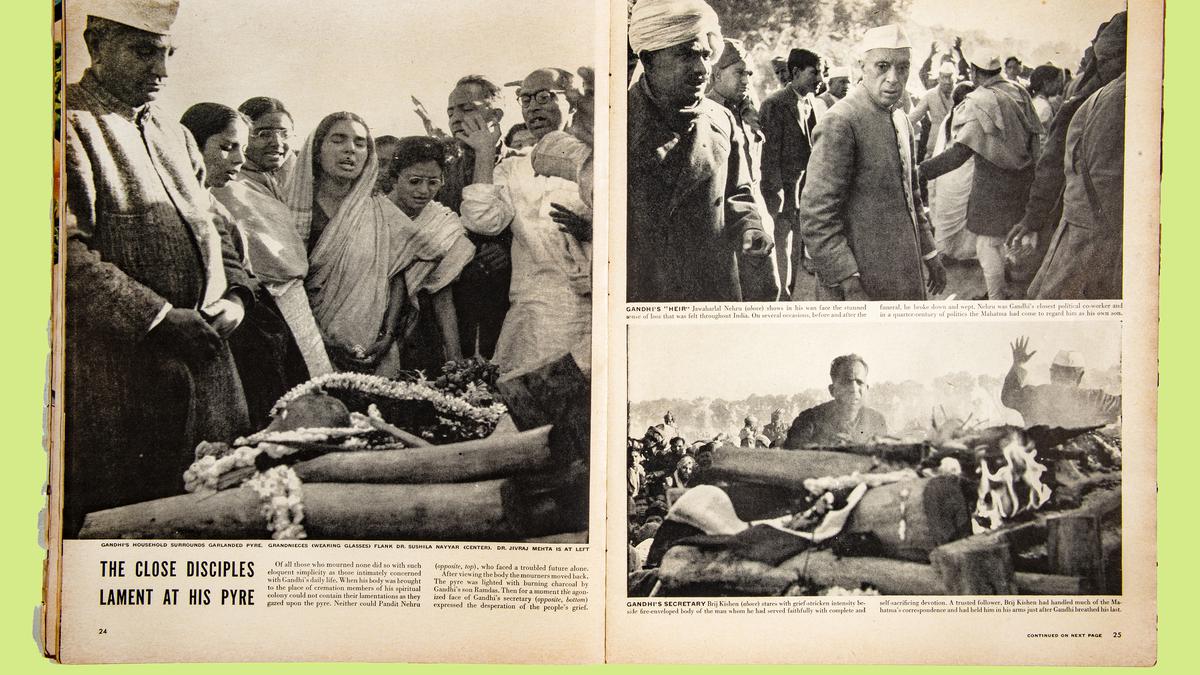
Unseen pictures of Mahatma Gandhi’s assassination displayed at Chennai’s Asian College of Journalism
The Hindu
Rare photographs of Gandhi’s assassination and canvases of resistance showcased at Asian College of Journalism
On the walls of the Asian College of Journalism today is art that begs a second glance. At first, it may seem amateur-ish. But a closer look reveals layers — of resistance, activism and opinions that defy fear. Superimposed on unassuming hessian sheets are words and images of over 280 writers, artists and activists, each driving home the importance of unity and defiance.
Take for instance, artist Pushpamala N’s image of a writing slate that carries an ode to Rohith Vemula or photojournalist Pablo Bartholomew’s photographs of 1970s Bombay where late thespian Gurcharan Singh Channi performed his radical street theatre production Disturbed Area, that spoke of State violence and political conflict. Titled Hum Sab Sahmat, a pandemic project, the display pays tribute to SAHMAT’s (Safdar Hashmi Memorial Art Trust) 1991 exhibition titled Images and Words where artists were encouraged to react to the political climate of the time, using any medium
Curated by Ram Rahman and Saarthak Singh, an allied fascinating exhibit of photographs by Henri-Cartier Bresson, Margaret Bourke-White and Max Desfor titled The Light Has Gone Out, conceptualised last year, takes us through the moment and aftermath of Gandhi’s assassination. It is a study on how photojournalism proves pivotal in shaping a nation’s history.
Ram who is also one of the founders of SAHMAT says, “Some of these images have never been seen before. The idea was to bring out this moment in our history, particularly at this point in time. It was also to remind people why Gandhi was killed and who killed him. The photographs show how personal stories and practices perfected the way the event got documented and reached the public booth.”
Spread across the corridors and on wooden structures erected at the entrance, are messages that touch upon political developments in the country, timed around the pandemic. Which is why artist Aban Raza, whose team curated the display, envisions it as a continuing project. “The first action was to segregate the reponse theme-wise. Some were talking about the environment, some about the rise of communalism, while others were commenting on women’s rights and the attack on universities and on the Delhi riots. It was a lot of working on one image with a text to make sense of the narrative.”
The format, which is unaffected by the space of display, was designed with accessibility at its centre. The show has travelled to Shantiniketan, Bhopal, Ajmer, Jaipur, Himachal Pradesh and protest sites since its inception.
Aban says, “The idea was to talk about where India is heading, and perhaps not agreeing with the direction it’s heading. It was a deliberate decision to involve writers, artists, photographers, journalists ...” On each sheet is Hum Sab Sahmat written in multiple languages, signalling the multicultural nature of the opinions.











